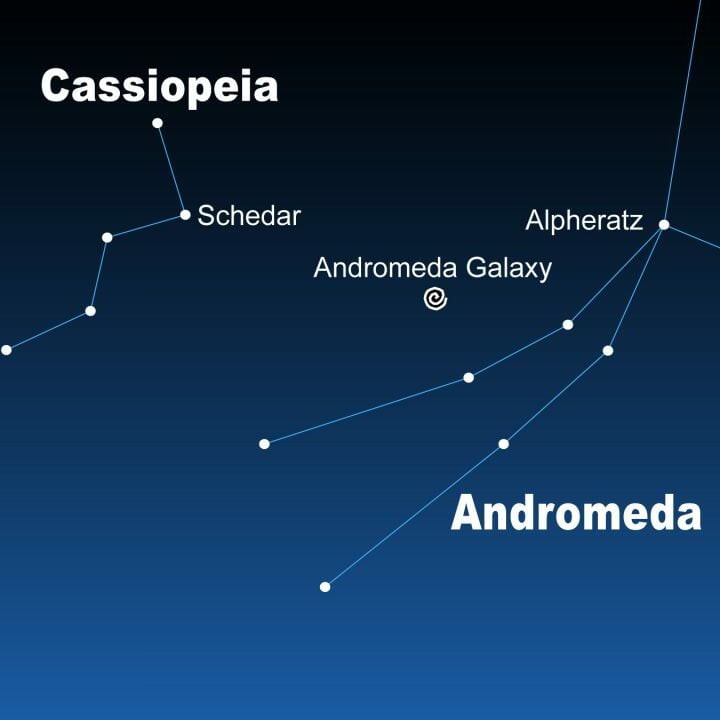The Andromeda Nebula (Messier 31, M31) is the nearest among the vast spiral galaxies, situated approximately 2.5 million light-years away from our planet. Its brilliance and magnificence make it a favored subject for photographers worldwide.
There are three primary approaches to capturing images of the Andromeda Nebula:
- Using a camera equipped with a telephoto lens (or telescope) and a tripod;
- Utilizing an astrophotography camera with advanced dodging capabilities (ranging from a homemade equatorial mount to an autoguided astrotracker worth tens of thousands of dollars);
- Accessing a private or public observatory remotely, employing professional-grade equipment situated in elevated locations like mountains or other areas with minimal light pollution.
This article discusses the advantages and disadvantages of each option, shares personal experiences and provides examples of shots. If you still have questions or are unfamiliar with astrophotography, I suggest reading the tips provided at the end of the article or the related posts below:
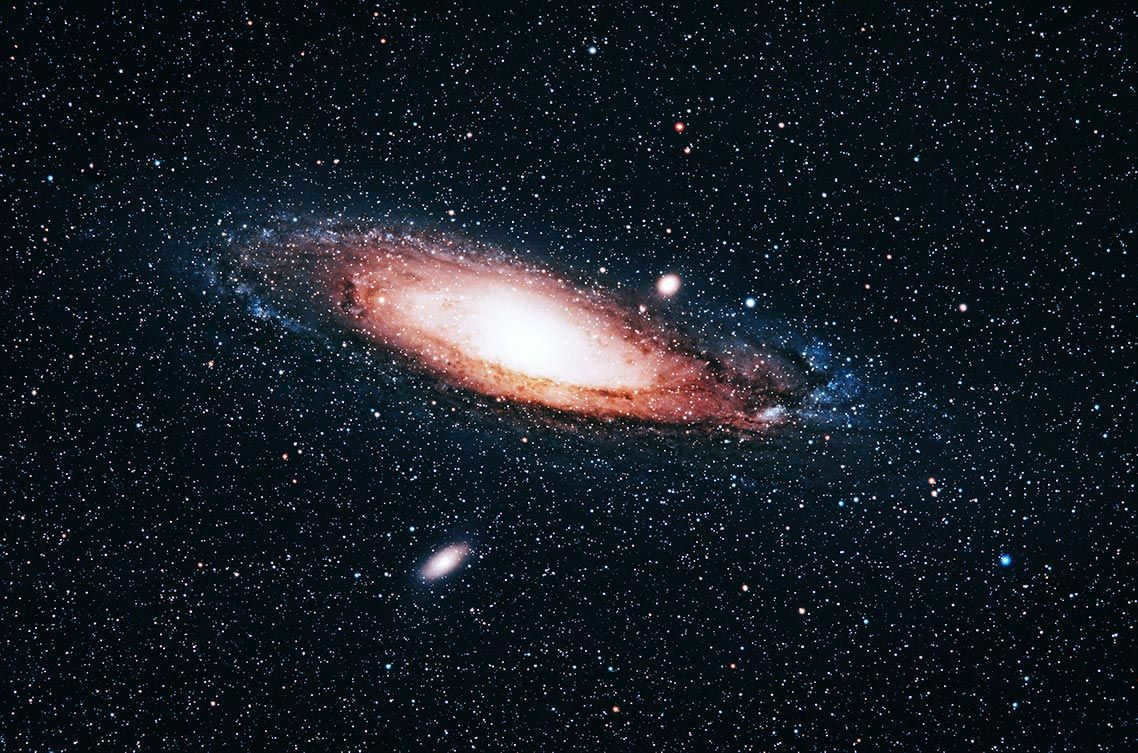

An easy method for capturing images of the Andromeda Nebula
For novice astrophotographers, the simplest approach to photographing the Andromeda Nebula involves using a camera mounted on a tripod and a 35-85 to 300mm lens (or telescope) to take long bursts at 800-1000 ISO. The length of exposure will vary depending on the chosen optics and the 600 rule, but I do not recommend exceeding 2-8 seconds without an astro tracker.
To prevent the Andromeda Nebula from extending beyond the boundaries of the frame, I suggest avoiding lenses with focal lengths exceeding 200-300 millimeters. Nevertheless, wide-angle and portrait lenses (35-135 mm) are not ideal for capturing astrophotos, unless you desire to integrate the galaxy seamlessly into the surrounding landscape. These types of lenses are most effective for capturing stunning images of the Milky Way:
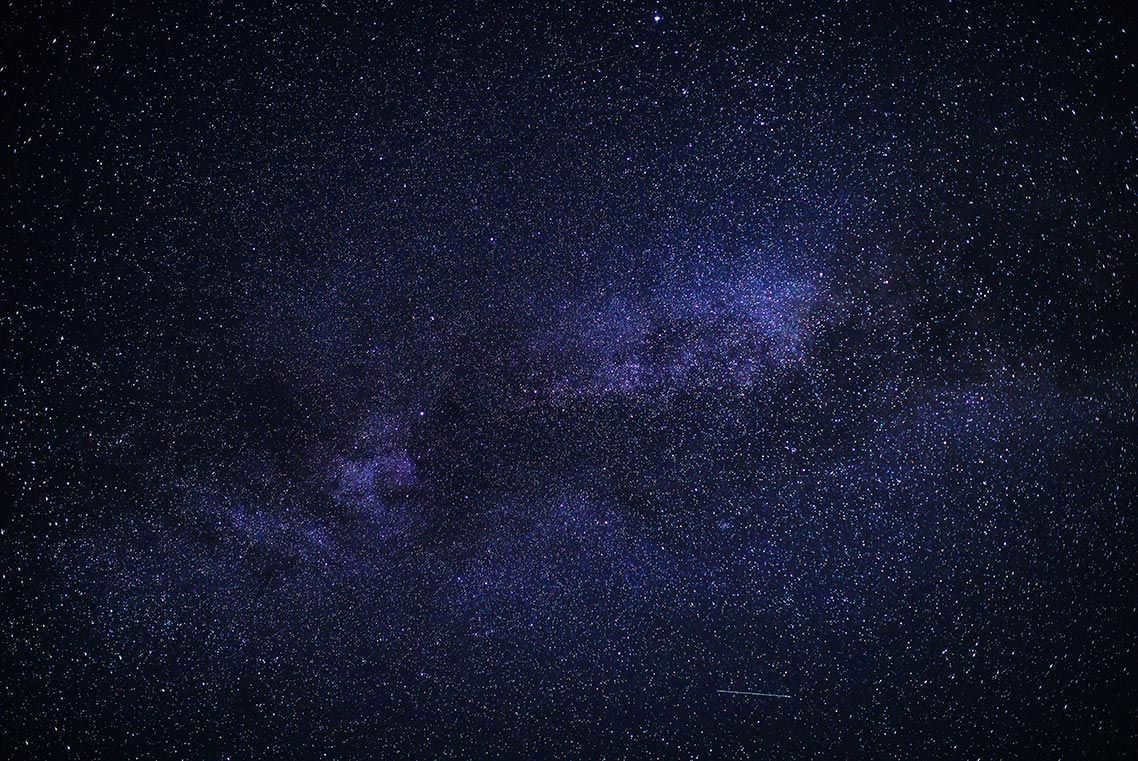
Once you have taken the photos, you will need to align them with each other and reduce noise using Stack and Median in Adobe Photoshop CC 2021 or another specialized editing software. After that, you can combine them into one single image.
To eliminate noise, it is necessary to stack multiple photos, often dozens or even hundreds. Therefore, it is recommended to focus on getting the most out of each individual shot rather than worrying about perfect shooting techniques. If you choose this approach, increase the ISO setting and concentrate on post-processing.
However, shooting without stacking increases the chances of getting a blurry image with high levels of noise and limited tonal range, especially when using a camera without the infrared cutoff filter removed.
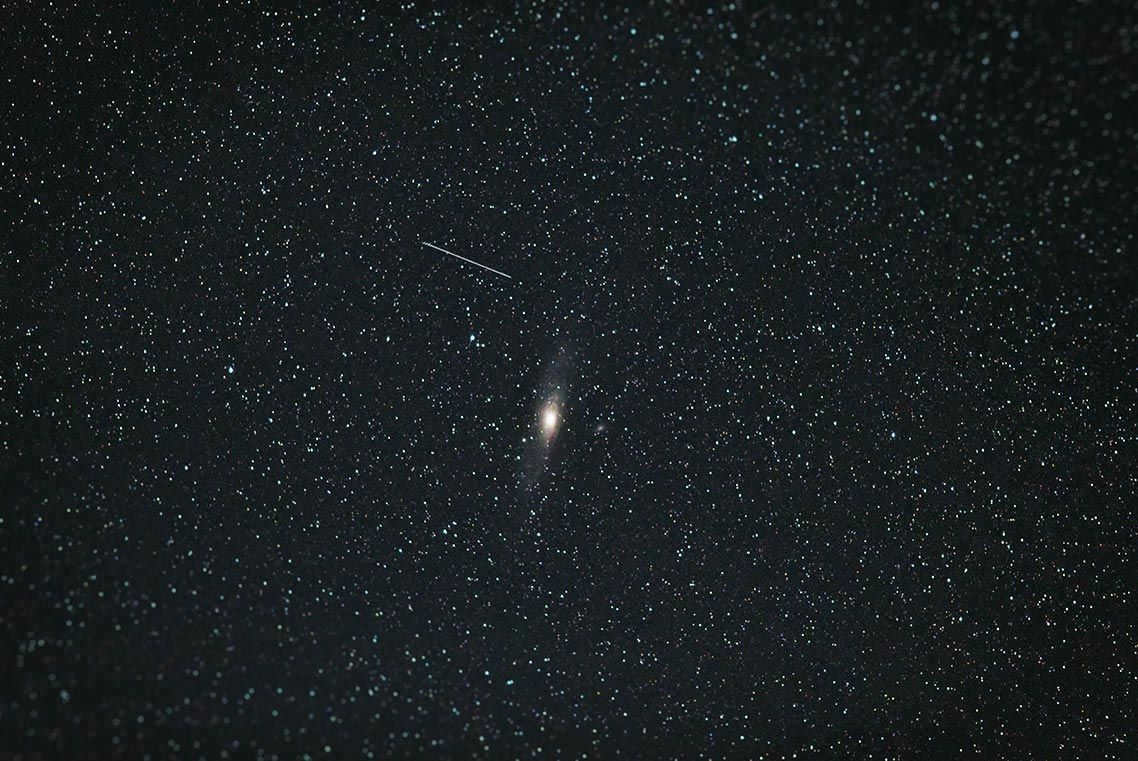
Stacking photographs and gradually reducing noise can enhance the quality and reveal even the most subtle details, but in my opinion, it is advisable to first gain some experience before diving into it.
Advantages of shooting without specialized equipment:
- You can capture images of the Andromeda Nebula, stars, and planets using whatever you have at hand;
- The cost of all the necessary equipment starts from 30,000 – 70,000 rubles, but it is possible to shoot at a lower budget (for instance, by purchasing a used camera from 2009-2012, manual lenses, and a worn-out tripod);
- You don’t need to delve deep into theory and practice to achieve interesting results;
- All you need is a clear sky above your head and a lot of enthusiasm.
Disadvantages of shooting without specialized equipment:
- Getting blurs in your photo is a common problem if you don’t use autoguiding and a sturdy tripod.
- In order to enhance the quality of your shots, it is necessary to take long bursts of photos. However, this can negatively impact the lifespan of the camera’s shutter, the sensor, and also requires more computational power from your PC.
- To achieve vibrant and captivating shots, you will need to venture further than what is typically required for astrophotography cameras. Alternatively, you can spend a significant amount of time processing the images in ACR, Lightroom, Capture One, or Adobe Photoshop.
Photographing the Andromeda Nebula with Extra Gear
In order to capture stunning images of the Andromeda Nebula in the night sky, it is recommended to take multiple short exposures using slow shutter speeds, ranging up to 30 seconds or a few minutes. To prevent any blurring or distortion, it is advisable to utilize telephoto lenses or telescopes mounted on a stable equatorial mount (such as an astrotracker) equipped with autoguiding technology. Additionally, controlling the entire process remotely can be achieved by utilizing a remote control, laptop, or smartphone. For optimal results, a professional-grade astrophotography camera is recommended.
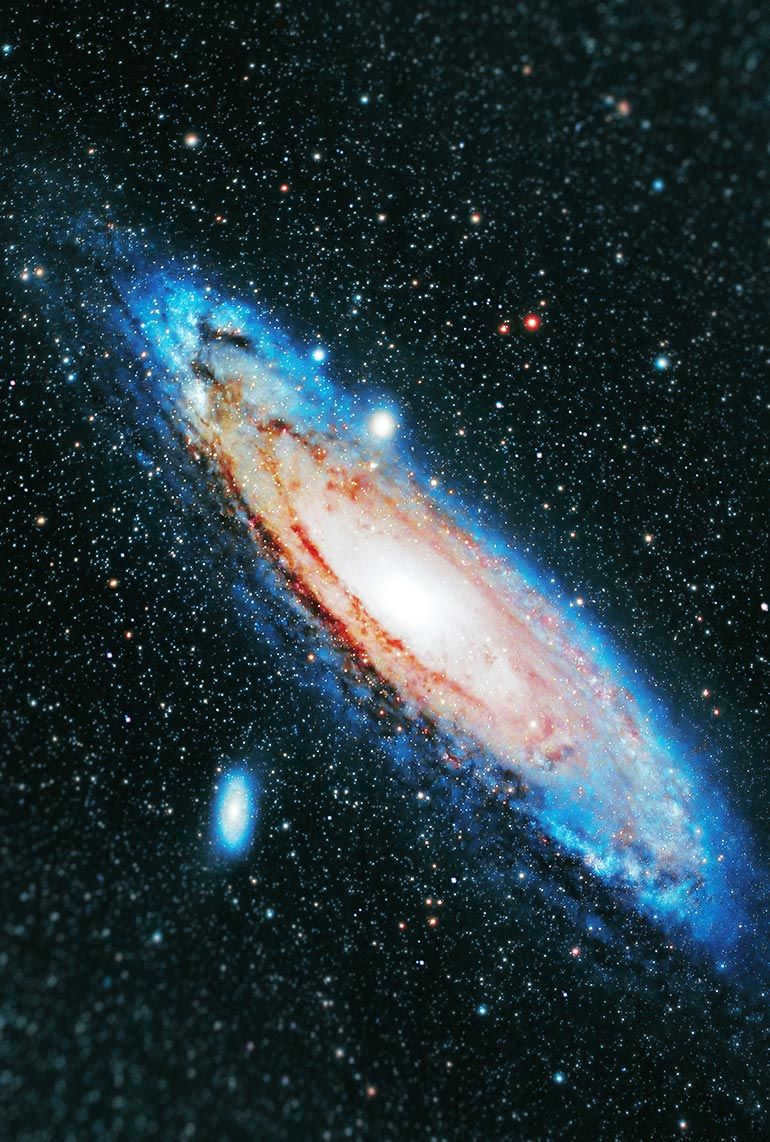
The ISO range for optimal shooting is between 200 and 800. It is recommended to capture dark frames (such as calibration frames – darks, bias, flats) and set up tracking for the Andromeda Galaxy in advance. This method is not suitable for beginners.
The “a” mark in the camera’s name stands for astrophotography, indicating the absence of an infrared cutoff filter and enhanced sensor capabilities (including the ability to capture light beyond the H-alpha spectral line at 656.28 nm). Furthermore, modern astrophotography cameras may feature a sensor cooling system, which helps prevent overheating and reduces noise in the final photos.
The fundamental principle of photography remains the same when it comes to shooting, although specialized software such as StarStaX is now more commonly used for image cleaning and comparison.
Advantages of shooting with specialized equipment:
- Endless upgrade possibilities;
- Enhanced control over the scene;
- Minimal chance of blur;
- Longer shutter life;
- Superior picture quality;
- Reduced photo noise thanks to lower ISO and cooler sensor;
- Reduced need for post-processing. Clean photos only require dozens, not hundreds, of shots, preventing excessive RAM usage and processor overload;
- Quicker RAW conversion and saving of final images due to fewer sources;
- The results are worthy of showing to friends or submitting to international competitions.
Negative aspects of using specialized equipment for photography:
- The cost of professional astrophotography equipment is extremely high;
- Some of the equipment is only suitable for capturing the night sky;
- The more equipment you have, the more difficult it will be to transport and set up, especially in remote locations;
- Preparing for a shoot can be as time-consuming as capturing the Andromeda Nebula itself;
- Obtaining high-quality results takes time. In contrast to professional shoots that involve merging images gradually, the outcome of a budget photo shoot can be seen immediately.
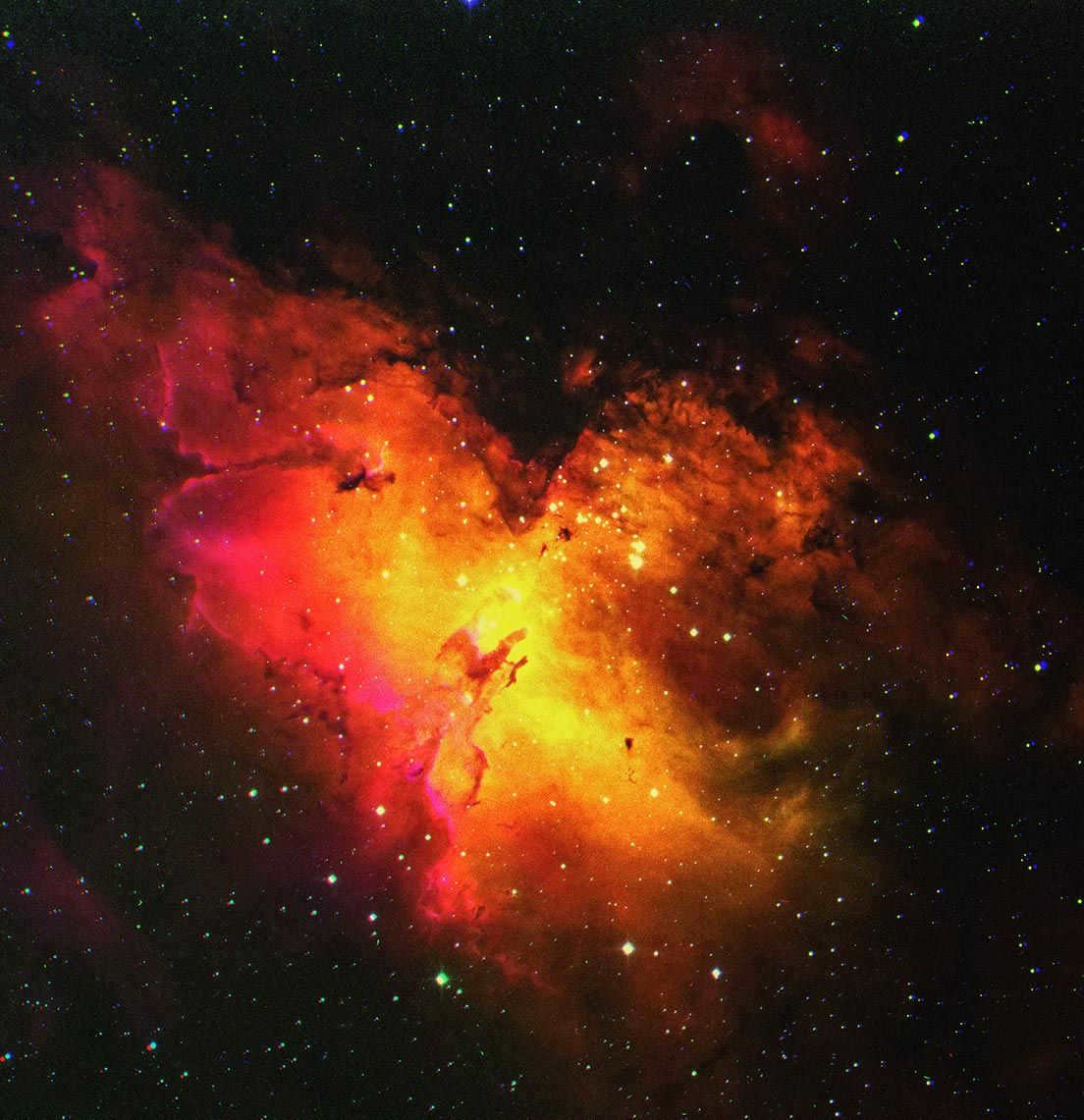
Photographing the Andromeda Nebula in a Private Observatory from Anywhere
One of the most fascinating, top-notch, and captivating methods for capturing images of the Andromeda Nebula is through remote access to private or public observatories. These observatories offer the use of telescopes for free or via subscription plans that range from as low as $20 per month to unlimited access.
Take, for instance, Telescope.live, a platform that grants you access to a plethora of pre-existing datasets, allowing you to observe galaxies and nebulae using nine different telescopes situated in Australia, Spain, and Chile. Additionally, you can create your own custom queries or adjust images within the app’s menu.
While most of the advanced features and options require payment in the form of “credits” rather than a subscription model, the cost is reasonable. One credit is equivalent to $1, and the usage of the telescopes typically ranges from 0.8 to $2.3 per minute, with hourly rates starting at $75. However, if your goal is to capture a distant nebula, the process can take several weeks, making it more costly compared to owning a complete set of professional equipment.

Obtaining access to telescopes remotely can be completely cost-free. However, the data you receive is often unsorted, making it challenging to locate specific materials and slowing down the process of creating datasets. The images can have varying resolutions, ranging from high (over 4000 pixels on the larger side) to extremely small (less than 1000 pixels).
Typically, free telescope access is offered by educational projects, research centers, and passionate astronomers.
You can extract valuable information from such images, but it requires additional time for analysis, utilizing neural networks to enhance image resolution, and developing and post-processing them. In my perspective, this is far from traditional “filming” and more akin to creative experimentation.
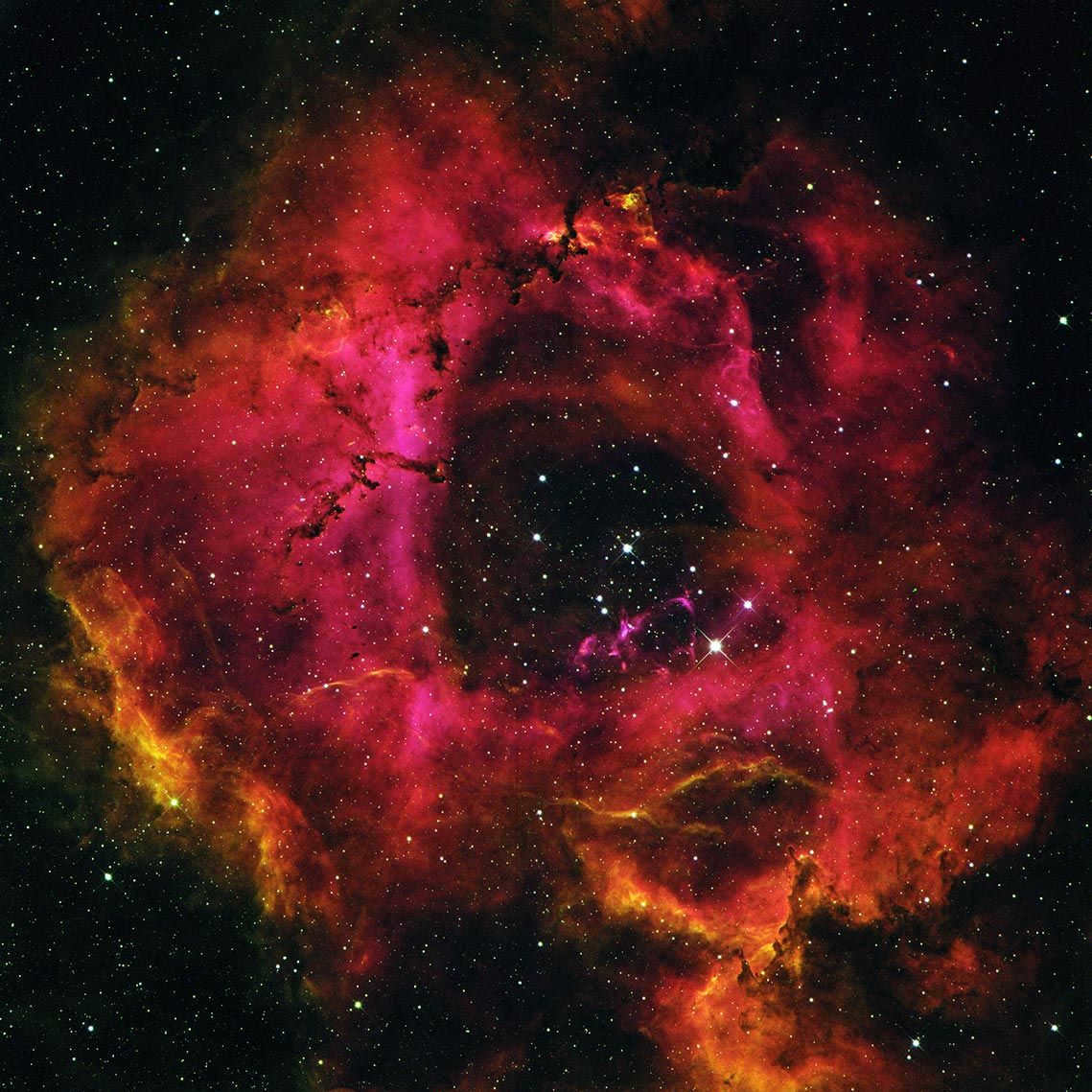
What are the key factors to consider when selecting a telescope with remote access?
First and foremost, it is crucial to choose a location with optimal visibility and minimal light pollution. This information can be obtained from weather forecasts and observatory websites. Additionally, it is important to be aware of the exposure time and filters used in the telescope, as these factors directly impact the resulting image and the complexity of post-processing.
Observatories frequently employ narrow-band filters such as H-alpha (hydrogen), OIII (oxygen), and SII (allows sulfur and heavy elements to pass through). These filters help to reduce the impact of backlighting and reveal the glow of galaxies, constellations, and nebulae. However, the resulting images are in black and white. To obtain a color image, it is necessary to combine these images by specifying each of the three frames as separate channels.
If the sources in the dataset do not match or there are insufficient images, one may have to manually color the image or tolerate the “stereoscopic picture” effect caused by issues with overlapping channels.
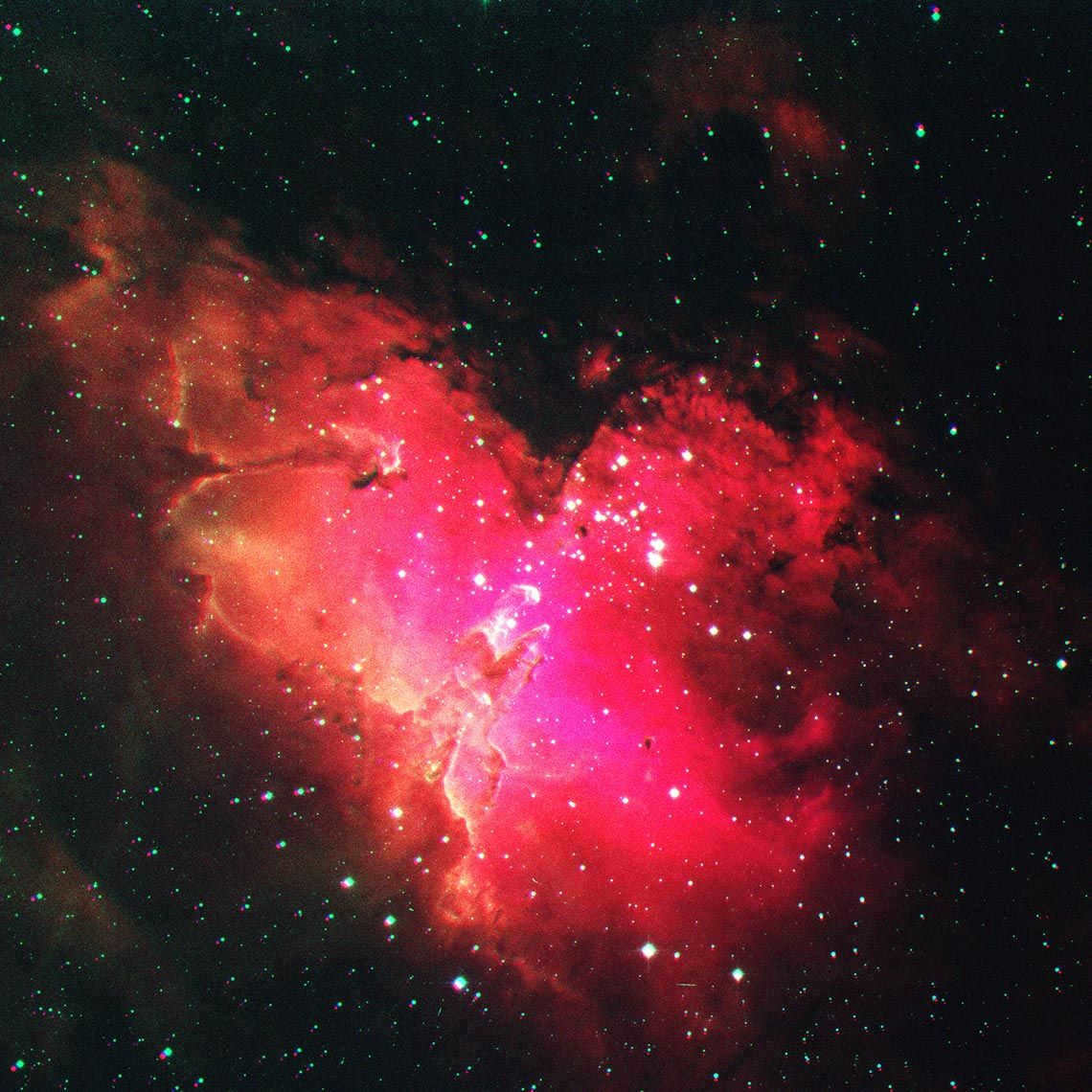
When using telescopes equipped with RGB filters, the process of image stacking becomes much simpler. All one needs to do is add the different color channels in the correct order and adjust the final result accordingly. However, when dealing with images captured by telescopes using H-alpha, OIII, and SII filters, additional correction may be necessary before stacking or more time may be required for post-processing.
Here is an example grayscale image of the Cone Nebula from the dataset:
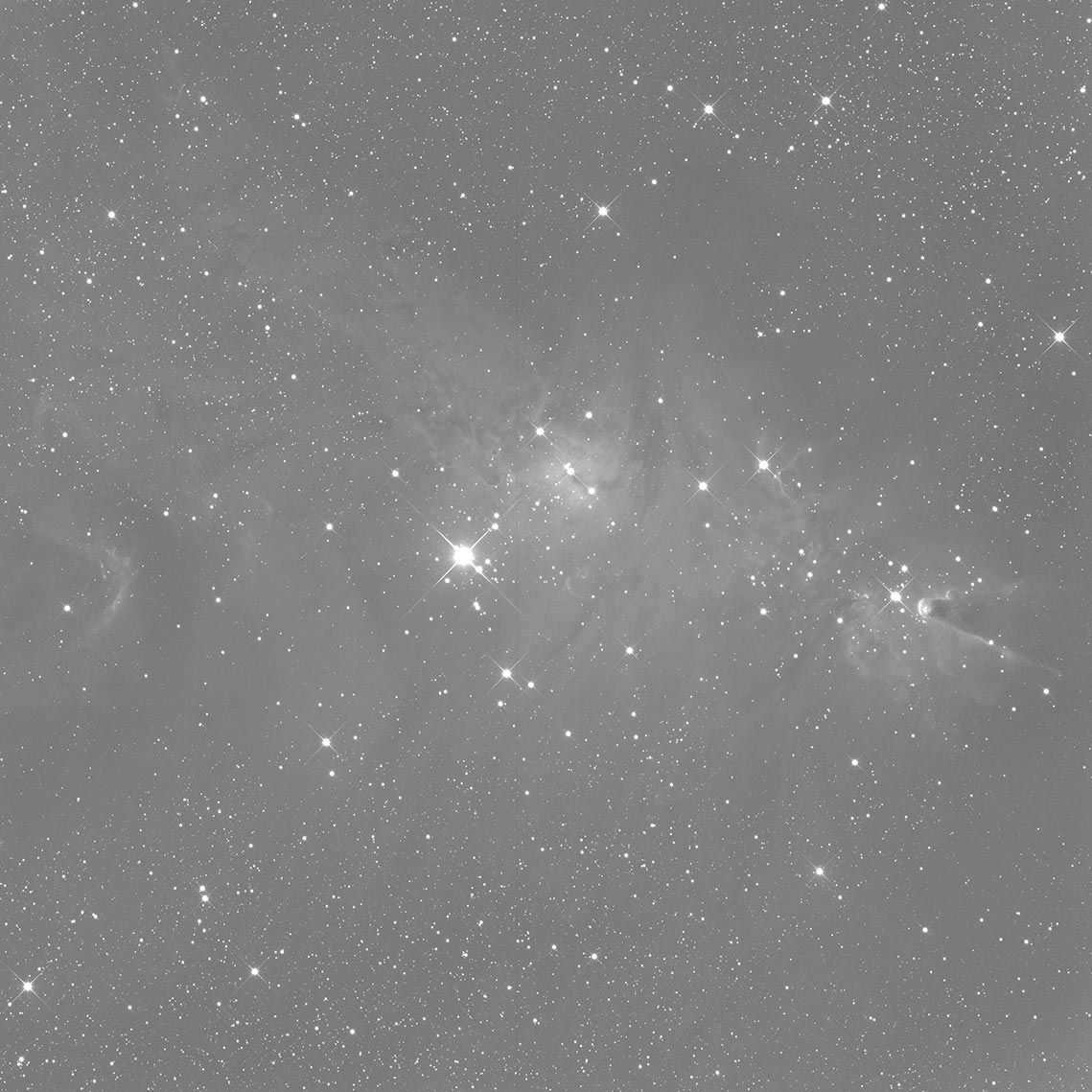
The Cone nebula has been transformed into RGB and edited using Adobe Photoshop CC 2021:
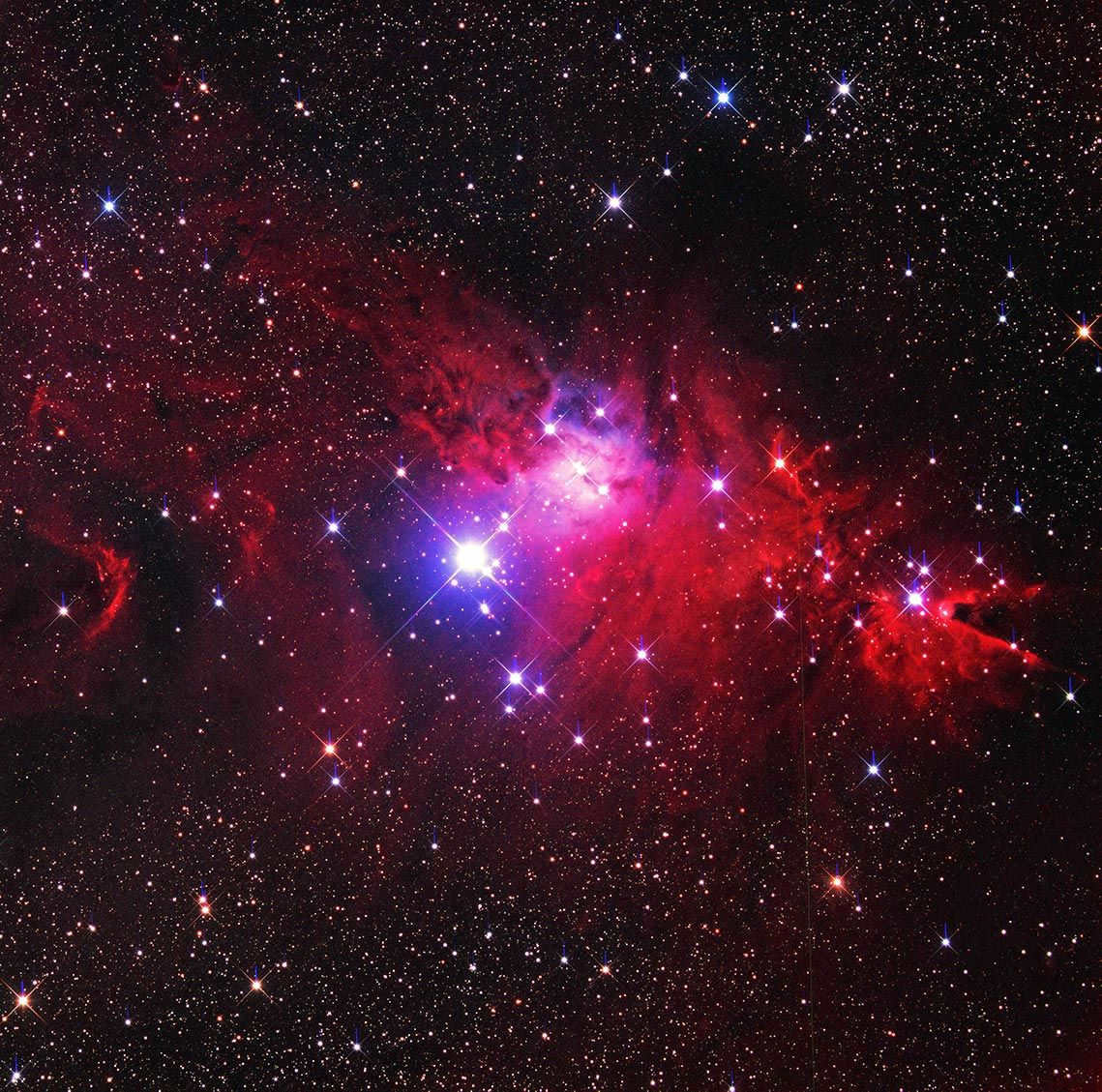
Some observatories offer the option to receive instant color photos, including the Andromeda Nebula, while others require you to develop the image.
Benefits of utilizing a remotely accessible telescope:
- Astrophotography can be done without the need for professional equipment;
- Using telescopes with default settings is either free or inexpensive;
- Many portals with premium access and high-quality datasets offer a trial period of one month;
- Observations can yield color images of galaxies and nebulae;
- Sites utilize email confirmation, which can potentially allow for multiple trial period extensions (although I do not recommend this for unethical purposes);
- Provides a great opportunity for experimentation and discovering unique moments;
- Perfect for beginners, offering a quick way to learn about post-processing and explore popular constellations, nebulae, and galaxies.
Drawbacks of using a remote access telescope:
- Limited control options, lack of real-time adjustments;
- Advanced features are seldom available;
- The cost of manually operating the telescope is extremely high;
- Results can be unpredictable due to sudden weather changes, software or hardware errors;
- Photographs require more intricate processing;
- It takes a considerable amount of time to capture a large series of images;
- Noise levels are significantly higher compared to the Canon 5D Mark 4 or even the Canon 6D;
- Photographing the Andromeda Nebula is only possible if the telescope is already observing it;
- It may be a matter of weeks before it’s your turn to be served.
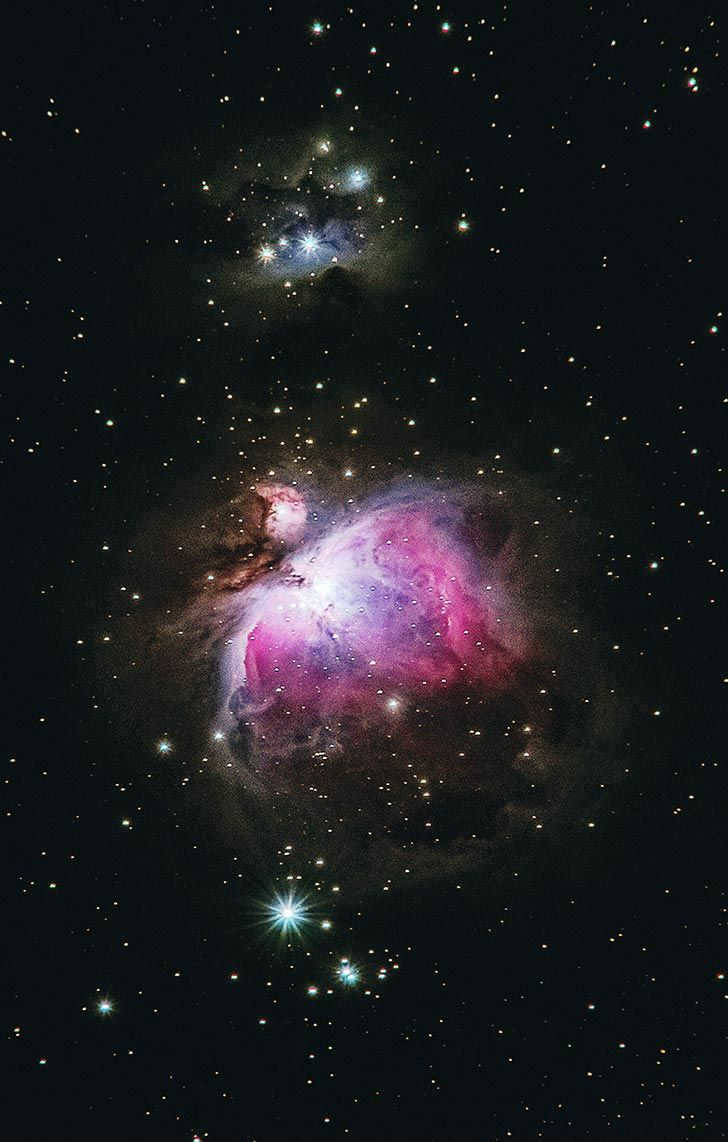
Renting equipment from amateur astronomers
Another option for capturing images of the Andromeda Nebula is to rent equipment from amateur astronomers. Similar to renting a telescope from a private observatory, this can be done remotely (by providing a ToR or setting up a connection using a PC, smartphone, or laptop), or you can arrange a contract to personally use the equipment.
- Choosing to rent a telescope from an observatory might be a more cost-effective option;
- If you’re fortunate, you may even be able to use the telescope at no cost;
- Engaging in a shared hobby allows for easy connections with new friends and interesting acquaintances, and it can improve your social interaction skills;
- Thematic forums can be a great resource for finding such offers;
- There is a lack of a developed market for services, particularly in Russia;
- The act of renting equipment can be deceptive;
- For a beginner, it can be challenging to verify the performance of the equipment, so there is a possibility of encountering scammers who are looking to profit from you;
- There is no guarantee that you will be able to capture the Andromeda Nebula if the equipment has copyright modifications;
- Astronomers and photographers hold their equipment in high regard. In many cases, renting is only possible through personal connections and trust, which takes time to establish;
- You are responsible for finding willing participants, installing software, establishing communication, and making payments;
- Any intermediaries are inherently untrustworthy and may disappear without a trace;
- Errors made by humans can cause your plans to go off track for a variety of reasons.
Where can the Andromeda Nebula be found?
The Andromeda Nebula is situated between the Pegasus and Cassiopeia constellations, near the Andromeda constellation itself (above Mu Andromeda). These constellations are easily identifiable even in moderately illuminated skies, making them useful for navigation. If you have poor eyesight or easily get confused about the location of celestial objects in the sky, the simplest way to locate the galaxy is to download a specialized smartphone app such as Star Walk 2 (available on Google Play and the App Store).
To find the Andromeda Nebula, you have the option to utilize various applications, but it is crucial to ensure that you have pre-installed the necessary software! While it is possible to search for the galaxy’s whereabouts on Google just before capturing the image, it is worth considering that when you are in remote areas, the internet connection may be unreliable. Exercising prudence by preparing in advance will ultimately save you precious time, energy, and even contribute to your mental well-being).
Tips for capturing stunning images of the Andromeda Galaxy
When photographing the Andromeda Galaxy (also known as Messier 31), you might notice that the central region of the galaxy appears clearly in your photos, while the intricate details and vibrant colors of the outer spiral arms are not as prominent.
To overcome this challenge, it is recommended to take multiple long exposure shots and merge them together. This technique, known as image stacking, enhances the overall signal (brightness) of the photo. For optimal results, try capturing around 30 shots with a 3-minute exposure time and set your ISO between 800-1250.
In order to avoid overexposure and blurriness in your Andromeda Galaxy images with these settings, it is advisable to cover the aperture and utilize auto-guiding. It’s worth noting that attempting to capture the Andromeda Galaxy without using an astrotracker while applying these settings may yield disappointing results.
Did you enjoy reading the article? Be sure to share it with your friends, leave comments, and subscribe to Telegram, Boosty, and other social media platforms to stay updated and be the first to discover all the exciting content!
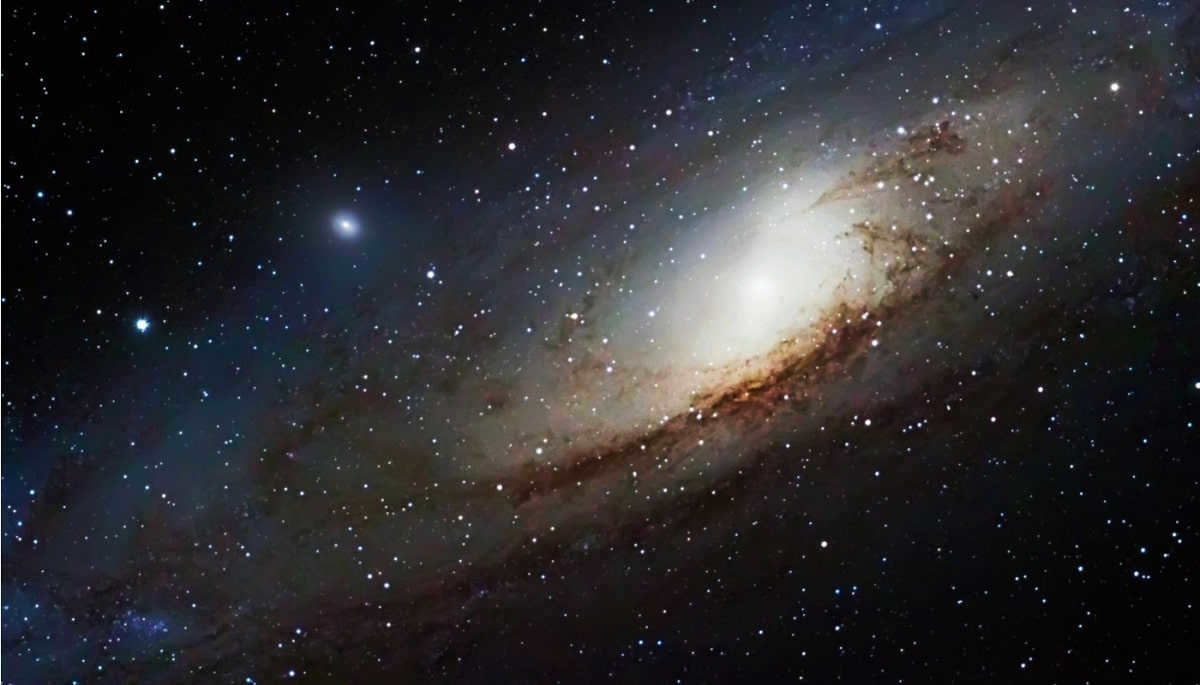
The Andromeda Galaxy is a massive collection of star systems, interstellar dust, and gas, all of which are subject to the forces of gravity. Situated at a distance of 2.5 million light-years from Earth, it stands out as the sole celestial body visible to the naked eye that exists beyond the confines of the Milky Way. The earliest record of this galaxy can be traced back to the year 961, when Al-Sufi, an astronomer from Persia, referred to it as a compact assemblage of clouds within the Andromeda constellation. It is highly probable that other ancient civilizations also observed its presence.
Within this article, we aim to furnish you with a comprehensive understanding of the Andromeda Galaxy, encompassing its defining features and its significance.
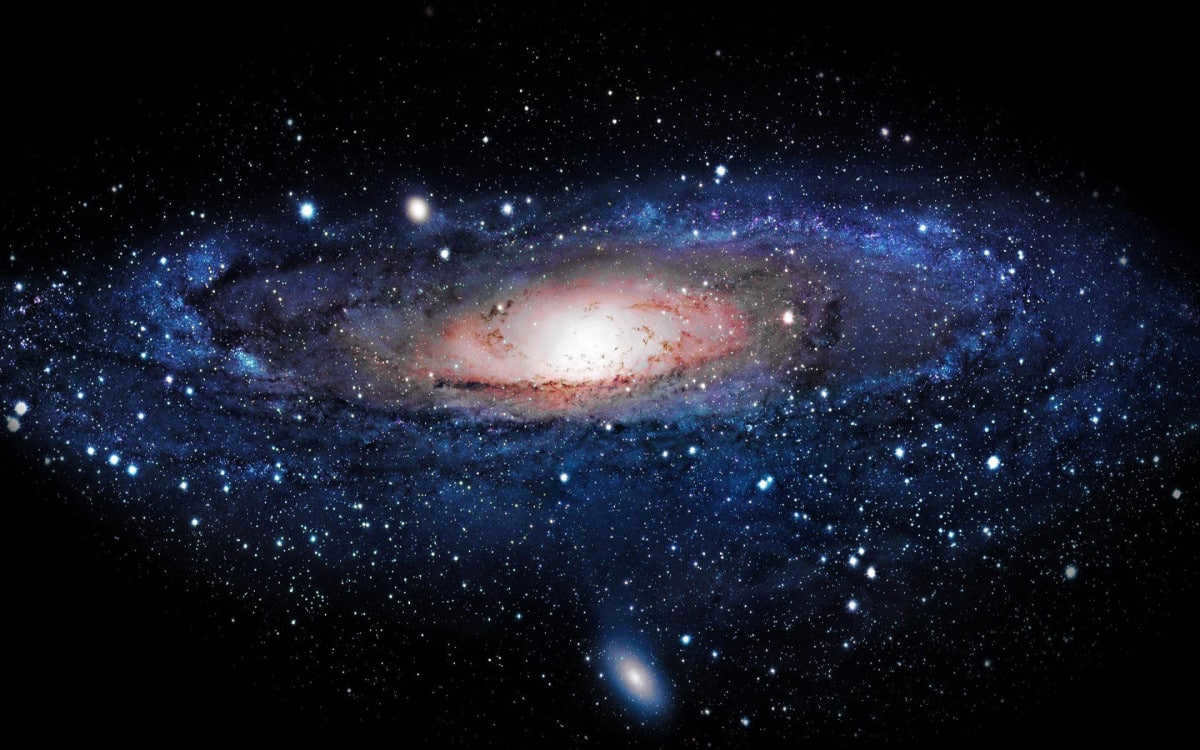
Andromeda is a spiral galaxy that bears resemblance to our own Milky Way. It has a flat disk shape with a bulge and multiple spiral arms in the center. Not all galaxies possess this particular structure. Hubble has observed numerous galaxies, classifying them on their renowned Chamberlain diagram or Hubble sequence, which is still utilized today. They are categorized as elliptical (E), lenticular (L), and spiral (S).
Furthermore, spiral galaxies are further divided into two groups: those with central cusps and those without central cusps. The prevailing consensus suggests that our Milky Way is an Sb spiral galaxy with a jumper. While we cannot observe it externally, Andromeda is a simple Sb spiral galaxy without a jumper, and we can almost see it from here.
Let us examine the most notable characteristics of Andromeda:
- It possesses a dual-core
- The size of the Milky Way is comparable to Andromeda’s size. However, the Milky Way has more mass and more dark matter.
- Andromeda has several satellite galaxies that interact gravitationally: M32 and M110, which are elliptical dwarf galaxies, and M33, a small spiral galaxy.
- It has a diameter of 220,000 light years.
- Andromeda is approximately twice as bright as the Milky Way and contains a billion stars.
- About 3% of the energy emitted by Andromeda is in the infrared. In comparison, the Milky Way emits 50% of its energy in the infrared. This percentage is often associated with the rate of star formation, which is high in the Milky Way and low in Andromeda.
Methods of visualizing the Andromeda galaxy
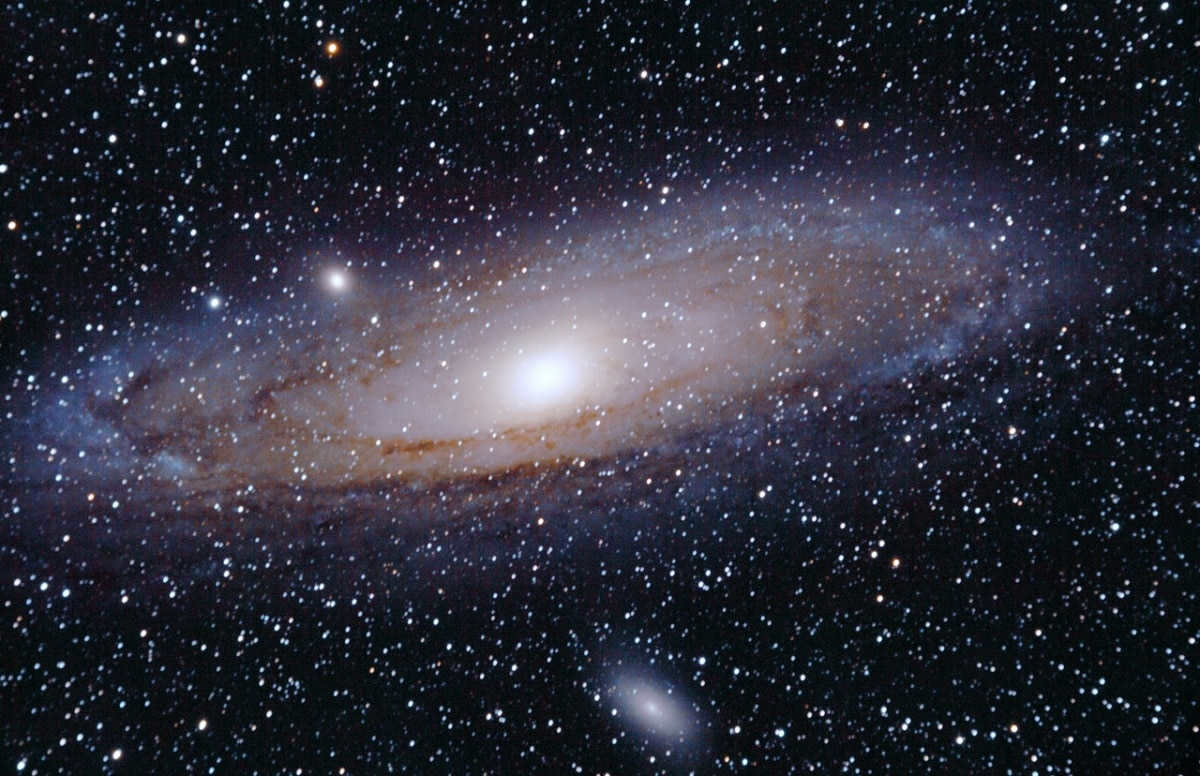
The Messier catalogue, dating back to 1774, provides a comprehensive list of 110 celestial objects, including the visually striking Andromeda galaxy, scientifically known as M31. These designations are crucial for locating galaxies on star maps and are widely utilized in various astronomy applications on both computers and mobile devices.
To get a visual representation of the Andromeda Galaxy, it is useful to first locate the constellation Cassiopeia. Cassiopeia is easily identifiable in the night sky due to its distinctive W or M shape. The Andromeda Galaxy is situated between Cassiopeia and the constellation Andromeda. Keep in mind that to view the Milky Way with the naked eye, the sky needs to be very dark with no nearby artificial lighting. However, even in densely populated cities, the Milky Way can be observed with the aid of binoculars. In such cases, a small white oval will become visible in the designated area.
By using a telescope, you can observe more intricate details of the galaxy and even locate two of its smaller companion galaxies.
The best time of year to view the Andromeda Galaxy is:
- In the Southern Hemisphere: The recommended time to observe is from October through December.
- Lastly, it is advised to observe during the phase of the new moon, ensure that the sky is as dark as possible, and dress appropriately for the current season.
Structure and Origin of the Andromeda Galaxy
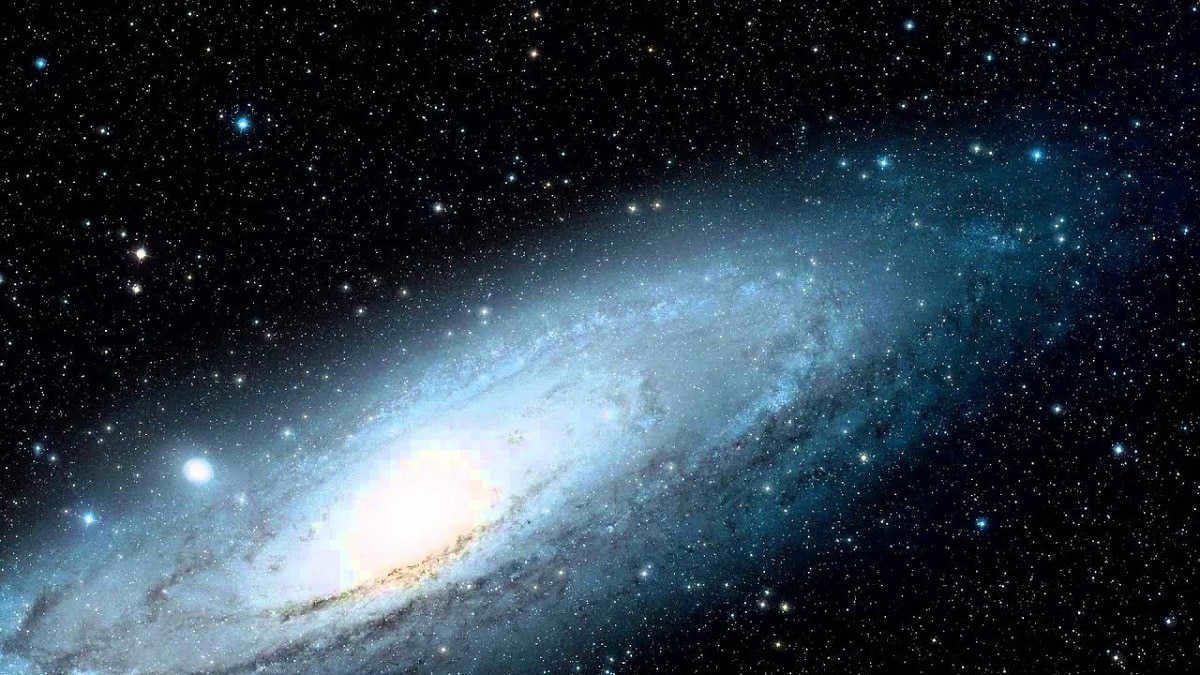
The structure of Andromeda galaxy is fundamentally similar to that of other spiral galaxies:
- It contains an atomic nucleus housing a supermassive black hole.
- The core, which encloses the nucleus and is filled with stars, is undergoing evolutionary changes.
- It possesses a disk of interstellar matter.
- The halo, an expansive diffuse sphere that envelopes the aforementioned structure, blends with the halo of the neighboring Milky Way.
Galaxies emerged from early protogalaxies or gas clouds and were organized in a relatively brief period of time following the occurrence of the Big Bang, which gave rise to the Universe. The lighter elements, hydrogen and helium, were formed during the Big Bang event. Consequently, the initial proto-galaxy must consist of these elements.
Initially, matter is uniformly distributed, but certain points gather slightly more than others. Where the density is higher, gravity comes into play and compels more material to accumulate. Over time, gravitational compression led to the formation of protogalaxies. The formation of Andromeda could be the outcome of a merger of multiple protogalaxies that took place roughly 10 billion years ago.
Considering that the estimated age of the universe is 13.700 billion years, Andromeda came into being shortly after the Big Bang, just like the Milky Way. Throughout its existence, Andromeda has assimilated other protogalaxies and galaxies, contributing to the shaping of its present form. Additionally, the rate of star formation has also varied over time due to these convergences.
Cepheids
Cepheids are a type of variable star that are incredibly luminous, far surpassing the brightness of the sun. Their brilliance allows them to be visible even from vast distances. A well-known example of a Cepheid variable star is Polaris. These stars are notable for their regular expansion and contraction cycles, which cause their brightness to fluctuate periodically. This pulsating behavior is what gives them their name.
At night, when observing two light sources of equal brightness in the distance, it is possible for one of the sources to appear dimmer simply because it is closer in proximity. As a result, the two light sources may appear to have the same brightness to the naked eye, despite one actually being less bright.
By reading this information, you will be able to gain a deeper understanding of the Andromeda galaxy and its unique features.
The details provided in this article adhere to our strict editorial standards. If you notice any inaccuracies, please click here to report them.
Summary of the Full Article: Network Meteorology “astronomy” Andromeda Galaxy
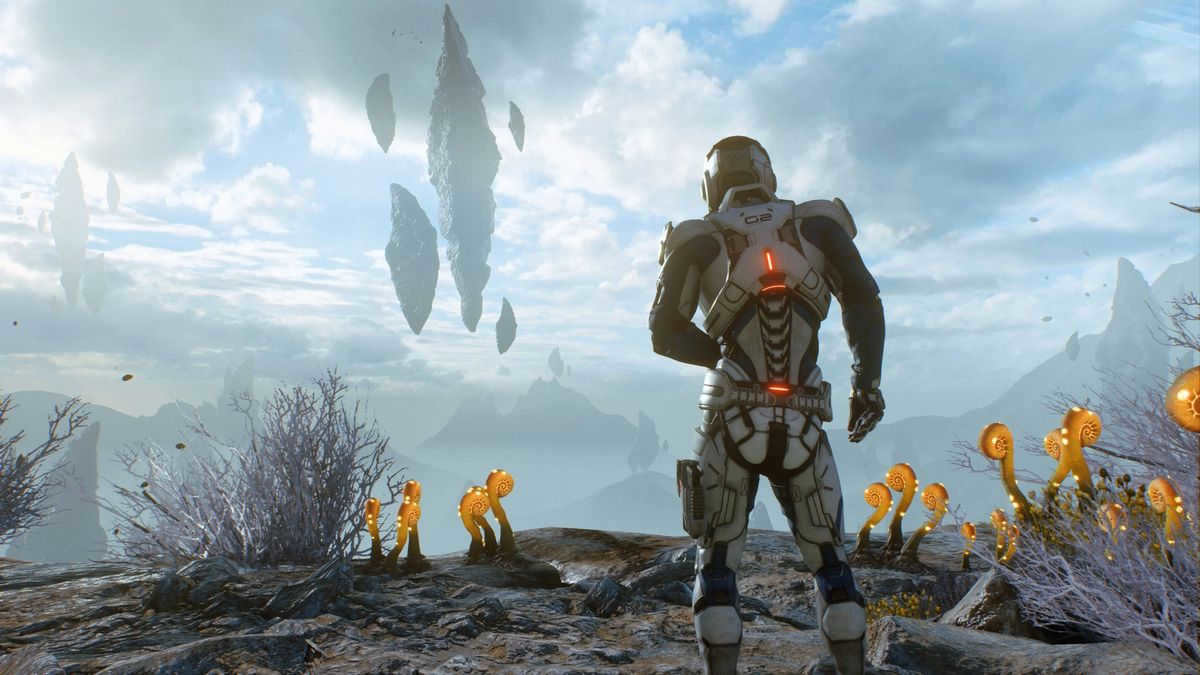
The Andromeda Galaxy is known by several names. Some refer to it as such, while others prefer the more formal term M31, and for some, it is called the Andromeda Nebula. Astronomers and sci-fi enthusiasts have been fascinated by this galaxy for many years, and now it has naturally become a part of the main game series set in space: Mass Effect.
We have gathered real information about this galaxy so that you can have a better understanding of the new “home” for all those who are currently playing the latest installment of the renowned franchise.
Andromeda is the biggest galaxy among the Local Group
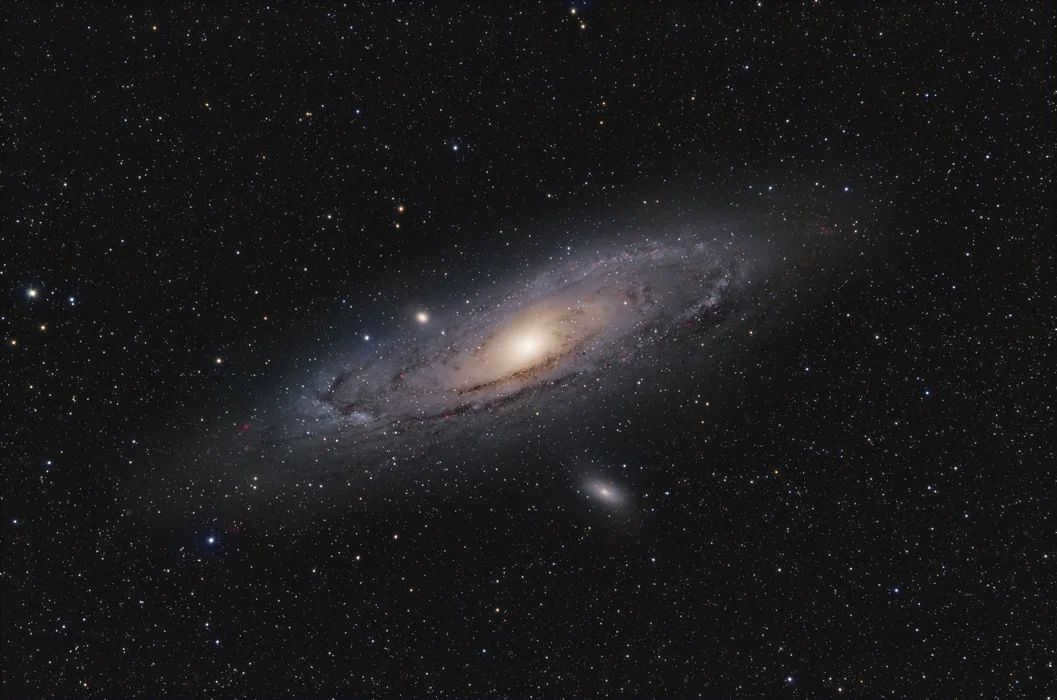
The best time to observe Andromeda is during the autumn season. While it is visible to the naked eye, we recommend bringing binoculars for a better view.
The Local Group, a collection of over fifty galaxies including the Milky Way, is dominated by Andromeda. With a trillion stars, Andromeda surpasses the Milky Way’s three hundred billion. Not only is Andromeda larger in size, stretching two hundred and sixty thousand light-years compared to the Milky Way’s one hundred thousand, but it also boasts a greater number of black holes. Scientists estimate that there are more than thirty black holes in Andromeda.
It is believed that the formation of Andromeda took place approximately ten billion years ago as a result of the collision between multiple smaller galaxies. Over time, through the process of intense star formation and the assimilation of hundreds of additional systems, M31 expanded to its enormous size. However, in recent times, its level of activity has significantly diminished, leading to a decrease in the formation of new stars within the Andromeda galaxy.
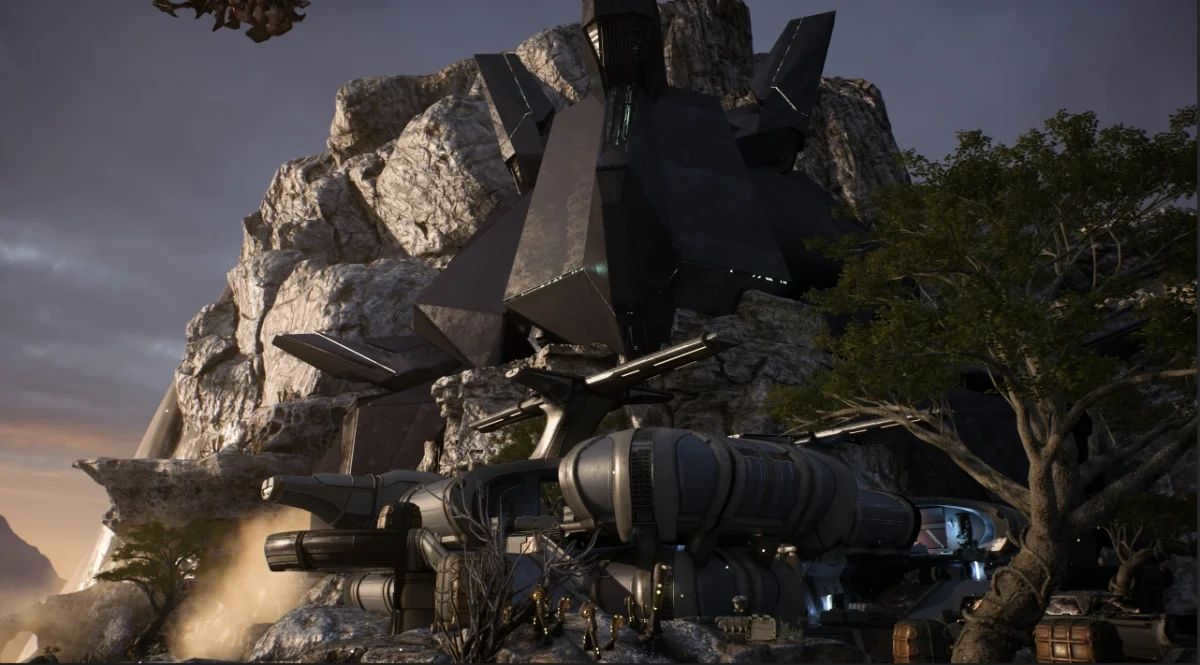
The Andromeda Galaxy is the closest large galaxy to the Milky Way
Indeed, there are closer smaller systems, including satellite galaxies, and Andromeda itself has at least fourteen of them. However, out of all the giants, Andromeda is the closest to us and every second it reduces its distance by over a hundred kilometers.
In about three billion years, M31 will be visible in detail just by looking up at the sky. And in about four and a half billion years, the Milky Way and Andromeda are expected to collide, merging into a single massive galaxy. Fortunately, this is unlikely to pose a threat to Earth, at least according to scientific predictions.

As scientists continue to unravel the mysteries of Andromeda, they gain more knowledge about our own galaxy, the Milky Way.
Unlike other large galaxies in the northern hemisphere, Andromeda can be observed with the naked eye in our modern era. This fact was recognized and taken advantage of by astronomers in the past. According to ancient records, M31 was first discovered by the Persians, with the earliest written evidence dating back to the tenth century.
Nevertheless, despite its relatively close proximity, Andromeda remains a significant distance away. It is so far away, in fact, that the image of M31 visible in our starry sky is actually from two and a half million years ago. This is because it takes that long for light from this galaxy to reach Earth.
You might wonder how the heroes of Andromeda knew where to go and how they were aware of these “golden worlds”. They were aided by Geth technology, which allowed them to peer far into the future using three interconnected mass repeaters. They could see so far into the future that the data was almost up-to-date. It’s unfortunate that no such tools have been invented in reality yet.
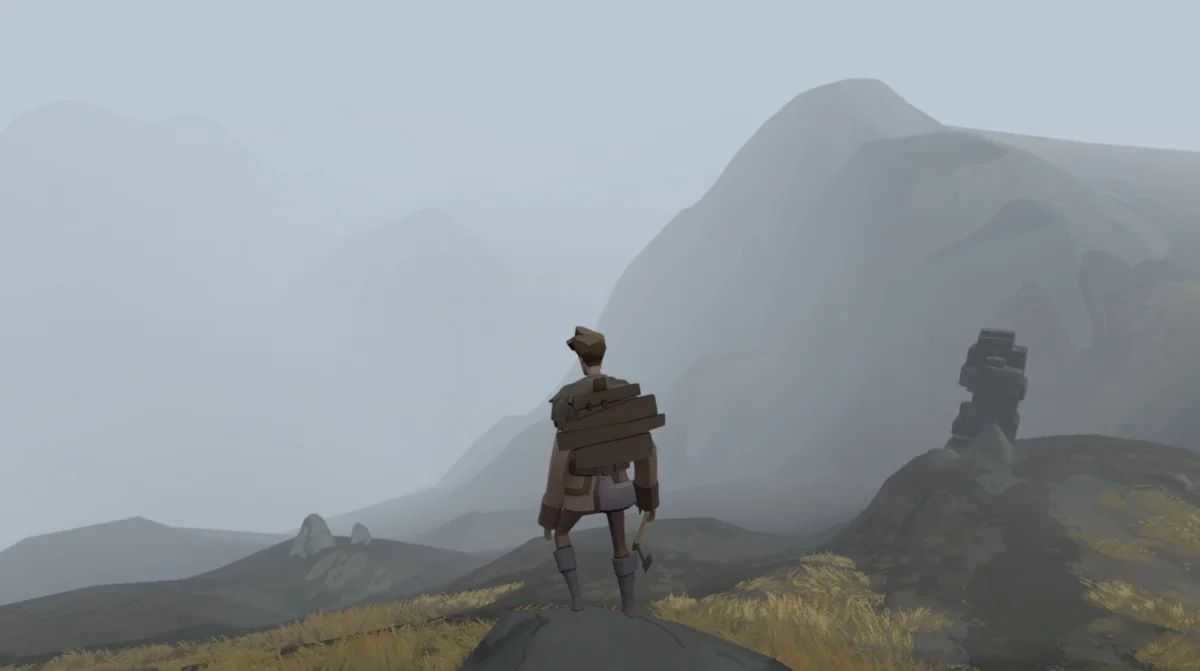
Andromeda: A Spiral Galaxy
In addition to its size, what interests scientists about Andromeda is its resemblance to our galaxy. The study of the Milky Way from Earth presents some challenges, but observing Andromeda from the outside provides valuable insights into our own star system.
Similar to the Milky Way, Andromeda is classified as a spiral galaxy. This means that, just like in pictures of other galaxies, you may have noticed a luminous ellipsoid, known as the “bulge,” at the center, which consists of many red, orange, and yellow dwarf stars. Surrounding the bulge are the distinctive spiraling arms composed of blue giant stars. This is a general representation of what spiral galaxies look like.
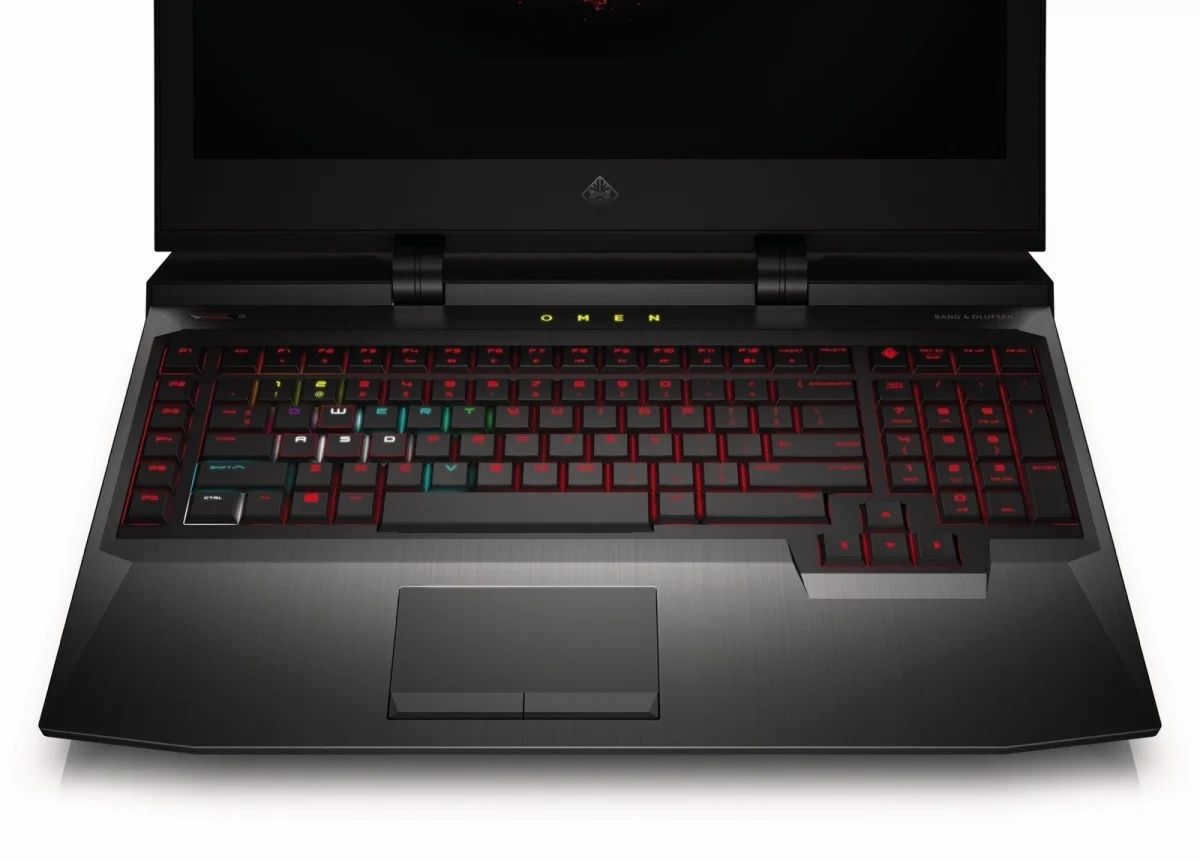
Despite residing in the Milky Way galaxy, our view of it from Earth is quite limited.
Therefore, the Andromeda galaxy must possess a significant amount of rotational momentum. Astronomers have discovered that at the core of Andromeda lies a supermassive black star, surrounded by old and young stars spinning at an astonishing speed of over a thousand kilometers per hour.
Moreover, recent observations have indicated that Andromeda, following its collision with the M32 system, now exhibits some characteristics of a ring-shaped galaxy, which has sparked great interest among scientists.
The Andromeda galaxy bears a striking resemblance to the Milky Way in its structure, but it is significantly larger, increasing the likelihood of there being intelligent life. Within the core of Andromeda, there are numerous stars similar to our Sun, and it is possible that among the surrounding planets, there exists a planet similar to Earth.
Mass Effect: Andromeda features seven “golden worlds” within the Elee star cluster. This star cluster has been explored by the enigmatic “Precursors” race, as well as the belligerent Kettes aliens and the enigmatic purple humanoids known as hangar.

It is difficult to predict what awaits humanity beyond the boundaries of the Milky Way. However, the mere thought of venturing into the unknown is truly awe-inspiring!
In the game, the inhabitants of Andromeda appear to be human-like, which is not very realistic. However, the storyline explains this and presents the indigenous inhabitants of Andromeda with intriguing characteristics.
Take, for instance, the residents of the galaxy who have developed defensive skin and even bony protrusions to shield themselves from the perils of the “scourge” – deadly masses of radioactive particles that can obliterate entire spacecraft. While the concept of this “scourge” may be purely the product of a screenwriter’s imagination, with little basis in reality, it does make one ponder: what if there is some semblance of truth to this fantastical depiction?

Currently, humanity has limited knowledge about the Andromeda galaxy, making the concept of traveling to it within the next century still a work of fiction. However, our understanding of Andromeda is gradually expanding, with the discovery of the first planet in 2009. While it remains distant for scientists involved in the Andromeda Initiative, this discovery marks a significant step forward. The future holds endless possibilities, and one potential outcome can be experienced firsthand in the game, Mass Effect: Andromeda!
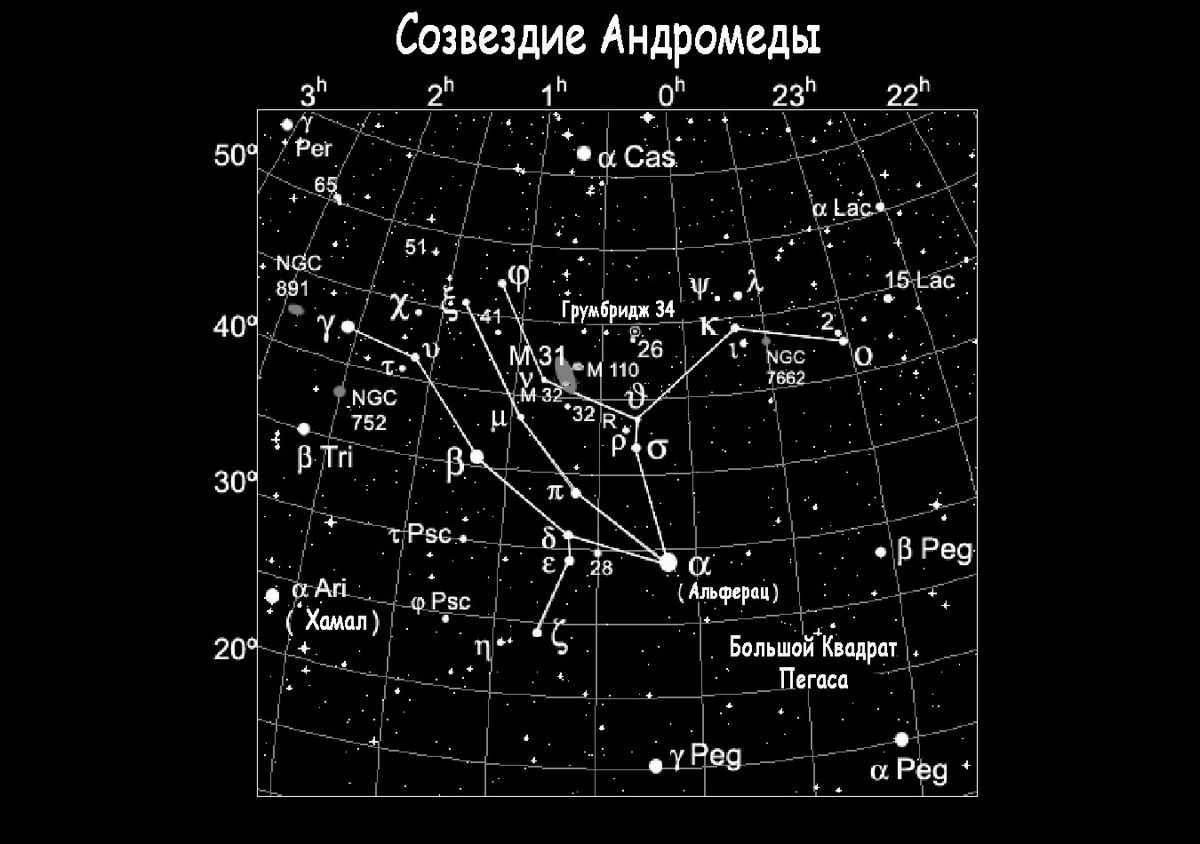
The constellation of Andromeda is visible in the northern hemisphere of Earth and consists of three stars that have a magnitude of two. It is known for its distinctive pattern formed by these stars, which stretches from the northeast to the southwest.
Andromeda is a constellation that can be easily seen from any part of Russia. It is highly visible in the sky and can be observed for most of the night. The best time to observe Andromeda is in October and November, although it is possible to start observing in September.
Finding the constellation Andromeda is not a difficult task. The first step is to locate the Great Square of Pegasus. In the northeast corner of this square, you will find a star named Alferats, which marks the beginning of Andromeda. This constellation covers an area of approximately 722 square degrees in the sky.
Andromeda is also home to the famous M31 galaxy.
Fascinating items
During a night without a moon, darkness, and clear skies, one can observe approximately 160 stars with the naked eye in the constellation. These are celestial bodies that possess a brightness of up to 6.5 star magnitudes.
Overview of the Andromeda Nebula galaxy or M31
Among all the entities within the constellation, the most notable one is the spiral galaxy known as the Andromeda Nebula or M31.
Photograph of the Andromeda Galaxy or M31 in the UV range
The M31 galaxy was first observed by astronomers in the 10th century, but its true essence was only revealed in the 19th century with the advent of powerful telescopes. There are also additional intriguing items within Andromeda such as variables, star clusters, planetary nebulae, dwarf galaxies, and more.
What M31 looks like through a telescope
Stellar Objects
Photograph of Gamma Andromeda or Almack
Almack is a triple system. The primary star is a yellow star with a second magnitude brightness. It is accompanied by two physically connected blue stars.
Alferats has a brightness of 2.1 stellar magnitudes. It is used for navigation purposes, similar to Almak. Ancient sailors used these stars to find their way home.
R Andromeda is a variable star. It exhibits a change in brightness of nine stellar magnitudes.
υ Andromeda is a main-sequence star with a planetary system. Astronomers have discovered a Jupiter-like planet, designated as planet b, as well as two eccentric giant planets.
Galaxies
The most well-known galaxy is the Andromeda Nebula, which was discovered by a Persian astronomer in the 10th century. It is accompanied by two satellites, the small galaxies M32 and NGC 205.


The nebula can be easily spotted with the naked eye on a moonless night. It has a diameter of approximately 220 thousand light years and contains over 300 billion stars. This closest spiral galaxy is located at a distance of 2.2 million light years from us. Inside the nebula, there are numerous globular clusters. The systematic observation of galaxies began with M32, and the famous Hubble telescope played a significant role in these observations.
Another remarkable galaxy is NGC 891, which appears ribbed and displays a mesmerizing beauty.
Observing NGC 891 through the telescope
Image of the Planetary nebula NGC 7662
Aside from the galaxies, there is also a planetary nebula known as NGC 7662 and a star, WASP-1, which is accompanied by an exoplanet.
Snapshot of the Star WASP-1, which harbors an exoplanet.
The Milky Way and M31 are on a collision course.
Currently, our galaxy and M31, the two largest galaxies in the local cluster, are slowly moving towards each other. In a few billion years, these galaxies will collide and merge, forming a magnificent spectacle of cosmic proportions. Astronomers have already created simulations to visualize this epic event.

